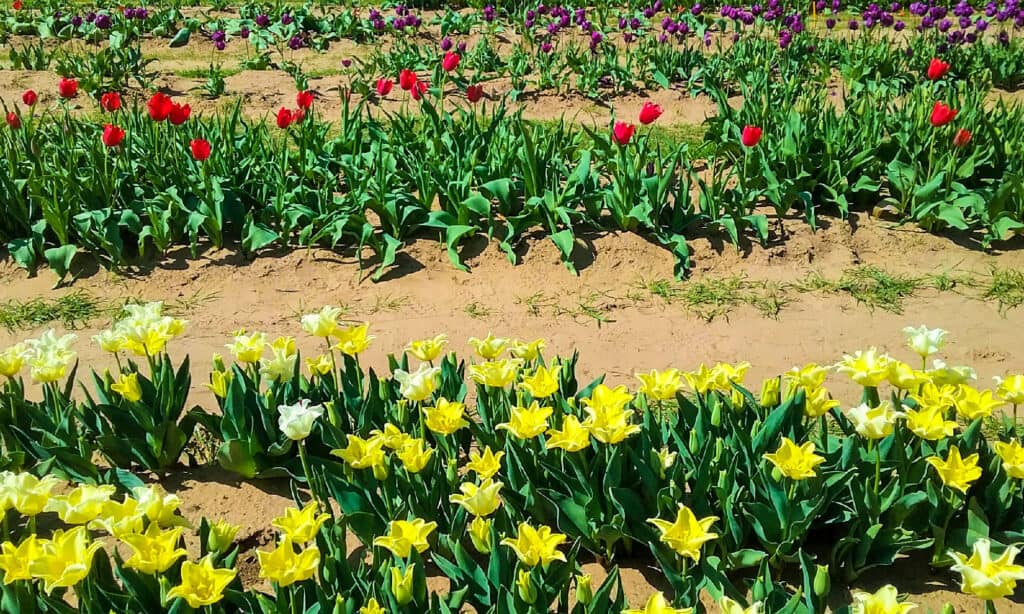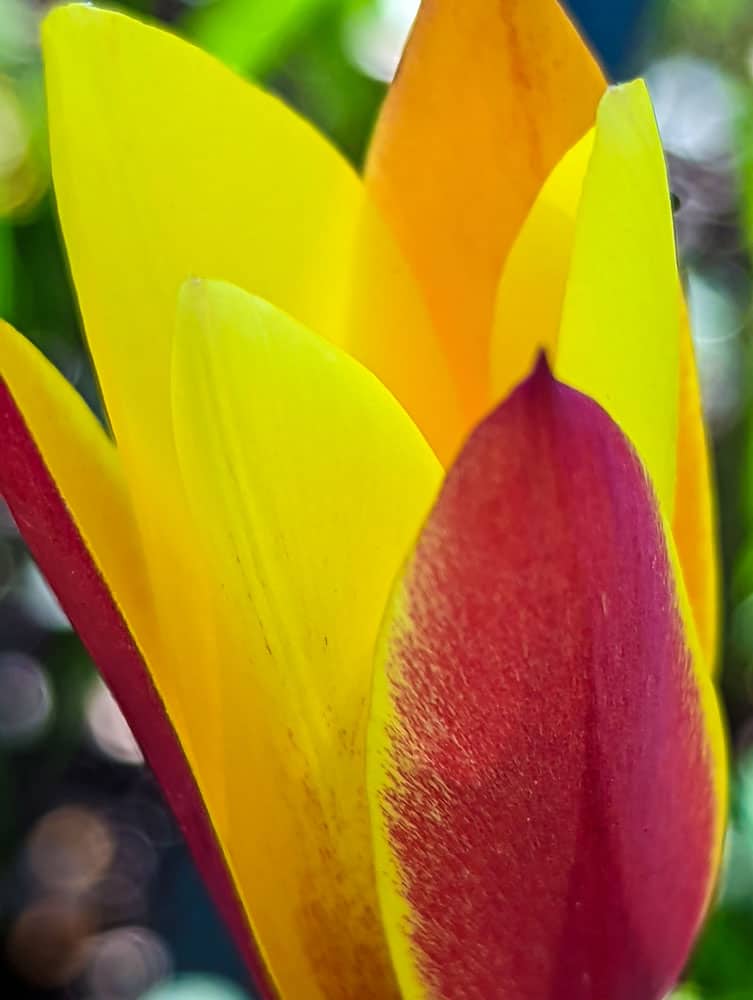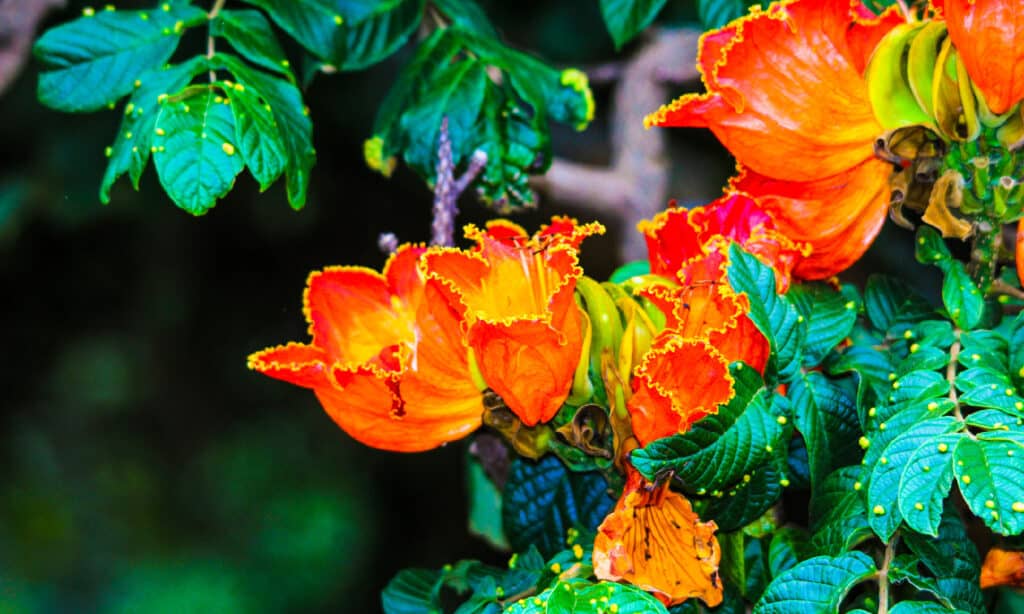The true wonders of nature often astound us, like flowers that have the power to make anyone speechless. Flowers are one of life’s simplest joys, reflecting beauty in its purest, most flawless form. Nothing beats the bursting colors in a fiegions with warm, dry summereld of wildflowers, the aroma of a fragrant arrangement, or the curiosity it brings about its size.
Flowers also have their own language and are used during life’s most significant events, such as birthdays, funerals, marriages, and graduations; some flowers even have religious significance. People will even travel great distances to admire seasonal blooms, such as the cherry blossoms in Japan or the tulips in the Netherlands. Speaking of tulips, do they grow in warm places like Texas? If so, what type of tulips are they, and when do they bloom?
One of the most well-liked annual flowers growing in Texas settings is the tulip. However, growing tulip flowers in a warm state can be challenging, and it can be considered an artistic endeavor depending on the meteorological and seasonal conditions. But with a little forethought and attention, you can enjoy robust, joyful, and striking tulips throughout the year. This article will show you the type of tulips that can be easily grown in Texas, when they bloom, and other interesting facts.
What Type of Tulip Blooms in Texas?

The wild species tulips are the ancestors of the blousey hybrids and cultivars in gardens.
©iStock.com/Regan Ledbetter
Most of today’s tulips require more winter cold and less summer heat than usual in the south to thrive as perennials. These restrictions, however, do not apply to species tulips. The wild species tulips, whose natural habitats are high in the highlands of Europe and Central Asia, are the ancestors of the blousey hybrids and cultivars we now enjoy in our gardens. These wild species tulips can function as small-flower perennials in Texas because they are native to regions with warm, dry summers. However, because market-savvy hybridizers cater to gardeners who prefer ornamentals with ever bigger and flashier blossoms, they are difficult to find commercially.
Although species tulips are thought to be a little less elegant than their cultivated descendants, they nevertheless have their own charm, especially when grown in pots or rock gardens. And a handful of them actually naturalize in Texas. Here are some of the common Texas tulips:
Lady Tulip

The fastest naturalizing tulip species in Texas is the lady tulip.
©iStock.com/Post_Insignem
Texas’ fastest-naturalizing tulip species is the adorable lady tulip (T. clusiana). It grows in tiny clusters under a foot tall, yet its many blossoms open to a width of around 4 inches. The buds have a beautiful pink candlestick appearance. The blossoms then transform into white chalices striped with wine-colored tepals (a flower part that is neither petal nor modified leaf) as they start to open. The blooms eventually turn into red-throated stars.
Fire Tulip

The Texas tulip, also known as the fire tulip, produces unscented but spectacular reddish-orange blooms.
©iStock.com/Ansley Kynes
The fire tulip (T. praecox), often known as the Texas tulip, comes in second. An heirloom plant that has become naturalized in the south, it produces unscented but incredibly spectacular reddish-orange blooms with black centers and yellow borders. It blooms as early as mid-March, easily survives humid summers, and does well in clay soils, even when only minimally treated.
Cretan Tulip

The Cretan tulip yields only blind, tiny bulbs.
©iStock.com/Iva Vagnerova
Another option for Texas’ soils, hot summers, and mild winters is the fragrant Cretan tulip (T. saxatilis). Unfortunately, this tulip frequently yields only blind, tiny bulbs, earning it a reputation for being sluggish to flower. The multi-flowering, better-behaved cultivar of this tulip known as “Lilac Wonder” is frequently referred to as T. bakeri. Its rose-lavender flowers have a vibrant sun-yellow core when completely opened.
Woodland Tulip

Having vivid yellow blossoms, the woodland tulip seems to nod on stems that appear to be resting.
©iStock.com/ANDA MIKELSONE
The woodland tulip (T. Sylvestris) has vivid yellow blossoms. The heads seem to nod on stems that appear to be resting. Depending on your viewpoint, this might make you happy or melancholic. It thrives in zones three through eight and will naturally spread to other locations. When this occurs, the bulbs become deeply embedded in the ground and are difficult to pull out.
When Do Species Tulips Bloom?
Species tulips bloom in a variety of colors from early March until mid-May. Unlike hybrid tulips, species bulbs continue to bloom year after year with no loss of vigor. They are always well proportioned, have a basic charm, and come in various colors, heights, and flower forms. For instance, you have the traditional tall Tulipa fosteriana with huge red flowers and the lilac-pink cup-shaped Tulipa saxatilis, with bright green foliage and a yellow spot in the center.
Species tulips are excellent harbingers of spring since they possess several favorable traits. First, they begin blooming considerably sooner than most early hybrid tulips. Species tulips typically cross paths with midseason and later daffodils, giving you fulfillment immediately away. The species tulips also provide a more natural appearance. They are smaller in stature overall and have smaller flowers than their hybrid cousins, frequently with beautifully arched stems. These realistic-appearing gems will persist for several weeks to weave a brilliant carpet if the weather doesn’t deliver an early season heat wave—especially if you plant multiple species for a succession of the stampede.
What is the Best Way to Ensure Tulip Successional Blossoming Annually?
Many hybrids are unreliable because they focus solely on floral power and become exhausted in their first year. Although the flowers of the Darwin series of tulip hybrids can fade over time, they do bloom for several years. Growing species tulips rather than hybrids and cultivars is the best solution for yearly successional flowering. If you are growing a species in your garden but do not want seeds, deadhead the blossoms so that all the energy may go into growing the bulb for the following year.
Additionally, species tulips frequently have better form and a more organic appearance. Some are stoloniferous and excellent for grass naturalization, including the deep red Tulipa sprengeri and the yellow Tulipa sylvestris. Many of the well-liked hybrids we see now in our garden centers and marketplaces are descended from Tulipa greigii from Kazakhstan, which has purple blotched leaves and huge, widely cupped flowers, and Tulipa kaufmanniana from the Tien Shan Mountains.
The photo featured at the top of this post is © iStock.com/ANDA MIKELSONE
Thank you for reading! Have some feedback for us? Contact the AZ Animals editorial team.






